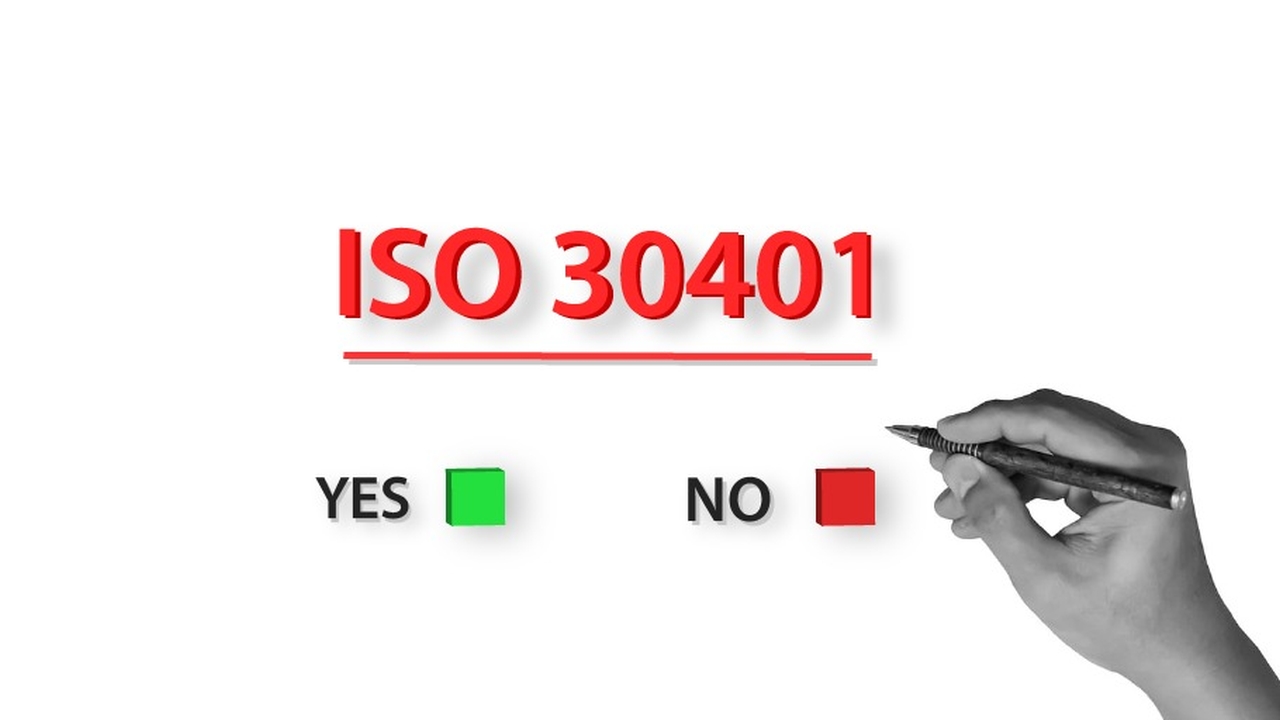
What leadership styles and behaviors constitute “knowledge leadership”?
Section 5 of the knowledge management (KM) standard ISO 30401:2018 Knowledge management systems — Requirements alerts to the importance of leadership in organizational KM, with section 5.1 requiring that:
Top management shall demonstrate leadership and commitment with respect to the knowledge management system by…
Section 5 then goes on to describe the mechanics of this leadership and commitment. But what leadership styles and behaviors can best make this happen? A recent International Journal of Information Science and Management paper1 by Hosseingholizadeh and colleagues reports the findings of a systematic review carried out to investigate this “knowledge leadership.”
The systematic review process used by Hosseingholizadeh and colleagues was adapted from the PRISMA guidelines2. Following a keyword search and the application of exclusion criteria, 149 articles were identified for analysis. Interestingly, just over half of the 149 studies were found to have been conducted in Asia, which Hosseingholizadeh and colleagues conclude reflects the global rise of interest in KM.
From their analysis of the 149 articles, Hosseingholizadeh and colleagues identified:
- the attributes of a knowledge leader
- effective knowledge leadership styles
- knowledge leadership for learning
- the leader-member exchange (LMX) perspective.
Attributes of a knowledge leader
From the reviewed articles, Hosseingholizadeh and colleagues identified that knowledge leaders need a wide range of attributes and characteristics, most importantly empathy, creativity, wisdom, reaction to crises, independence, initiative skills, reliability, innovation, competitiveness, patience, ethics, humility, trust and trustworthiness, and resilience. These attributes and characteristics enable knowledge leaders to understand the system, processes, and people and shape them into a cohesive and functional whole.
Effective knowledge leadership styles
The most effective knowledge leadership styles that Hosseingholizadeh and colleagues identified in the reviewed articles were:
1. Transformational leadership
Transformational leadership3 focuses on followers, motivating them to high levels of performance, and in the process, helping followers to develop their own leadership potential. There are four components to transformational leadership, sometimes referred to as the four I’s: idealized influence, inspirational motivation, individualized consideration, and intellectual stimulation.
Hosseingholizadeh and colleagues found transformational leadership to be the most studied leadership style, with many of the reviewed articles confirming that it is a significant driver of organizational learning and the KM process. It is also a significant predictor of knowledge usage. Transformational leadership’s vision creation and intellectual stimulation fosters an organizational climate for knowledge sharing. Furthermore, transformational leadership has a direct influence on employees’ day-to-day involvement in the KM process, such as acquiring, transferring, and applying knowledge.
2. Distributed leadership
Rather than looking at the characteristics of the individual leader or features of the situation, distributed leadership4 focuses on how actors engage in tasks that are distributed across the organization. Understanding leadership from a distributed perspective means seeing leadership activities as a situated and social process at the intersection of leaders, followers, and the situation.
Hosseingholizadeh and colleagues found distributed leadership to also be a dominant approach in the reviewed articles. It promotes human interaction by successively breaking down barriers to communication and cooperation and encouraging participative decision-making processes. Participatory and shared leadership is positively associated with high levels of employee engagement in KM activities.
3. Empowering leadership
Empowering leadership5 involves leaders sharing power with their subordinates, giving them decision-making authority. Empowering leaders also express confidence in employees’ abilities to perform their jobs autonomously. Empowerment includes four leader behaviors: highlighting the significance of employee work, allowing employee participation in decision-making, emphasizing employee strengths, and removing bureaucratic constraints.
Hosseingholizadeh and colleagues found empowering leadership to be the third most frequent leadership style put forward in the reviewed articles. Leaders’ consulting and delegating behaviors are found to be important for effective KM practices. Some articles further argue that empowering leadership facilitates knowledge sharing, which results in high team performance and increases the absorptive capacity of the team.
4. Visionary leadership
Someone who is out to impact the world with a compelling vision all of their own and in ways never before seen is demonstrating visionary leadership6. Visionary leaders rule with this vision, sharing it with the organization and galvanizing teams to push it forward in an inspirational rather than authoritarian style. True visionary leaders give employees the freedom to come up with the best route for bringing the leader’s vision for the company to life, all with the deep understanding that it takes great discipline and commitment to see this vision through to fruition.
From the reviewed articles, Hosseingholizadeh and colleagues found that the strategic dimension of visionary leadership contributes to the success of KM practices, with visionary leaders acting as motivator, enabler, facilitator, and mentor. Visionary leadership is further found to be positively associated with employee creativity, and this relationship is positively mediated by employee knowledge-sharing.
Knowledge leadership for learning
From the reviewed articles, Hosseingholizadeh and colleagues also identified that knowledge leaders should act as enablers of learning and knowledge sharing through building a collaborative culture and technological know-how. This is because effective KM is facilitated by an organizational culture that supports learning and knowledge sharing, and a learning culture also has a significant and direct role in the application of knowledge.
The leader-member exchange (LMX) perspective
Additionally, Hosseingholizadeh and colleagues identified a leader-member exchange (LMX) perspective in the reviewed articles.
Leader-member exchange (LMX)7 theories assert that relationships between leaders and subordinates can be differentiated in terms of the quality of the exchange relationship. In high-quality relationships, leader and member exchanges involve resources, information, physical and mental effort, and emotional support. In low-quality relationships, exchanges are limited to those specified in the employment contract or the formal job description. Members who have a high LMX relationship with their supervisor have been said to be part of an ‘‘in-group,’’ while members who have low quality LMX relationships with their supervisor have been considered to be in the ‘‘out-group.’’
From the reviewed articles, Hosseingholizadeh and colleagues found that a high LMX relationship significantly affects knowledge worker satisfaction and productivity. A leader’s feedback greatly influences employee knowledge-sharing behaviors and effective knowledge transfer, and promotes the successful implementation of KM processes. When members feel recognized and supported, they are more willing to share information, cooperate, and work with team members to achieve collective goals.
Using these research findings
Hosseingholizadeh and colleagues’ systematic review provides useful information for both organizations and organizational leaders in determining the best leadership styles and behaviors for achieving “knowledge leadership.”
However, it should be noted that the leadership styles aren’t a magic solution. There can be negatives associated with the identified styles, for example8, while empowering leadership can motivate employees and fuel their creativity, it can also create additional burdens and stress that may hurt their routine performance.
This means that the leadership style and behavior choices for any organization need to be carefully evaluated and implemented.
References:
- Hosseingholizadeh, R., El-Farr, H., Kerman, N.T., Lotfi, H., Ahmadi, M., Akhoondi, M., & Baigi, S.A.S. (2022). A systematic review and synthesis of empirical research on “knowledge leadership”: a new insight in the field of knowledge management. International Journal of Information Science and Management (IJISM), 20(4), 169-192. ↩
- Moher, D., Liberati, A., Tetzlaff, J., Altman, D.G., & Prisma Group. (2009). Preferred reporting items for systematic reviews and meta-analyses: the PRISMA statement. PLoS medicine, 6(7), e1000097. ↩
- Riggio, R.E. (2009, March 24). Are You a Transformational Leader? Psychology Today. ↩
- Wikipedia, CC BY-SA 3.0. ↩
- Lorinkova, N.M., & Perry, S.J. (2018, June). Reducing employee cynicism and time theft through empowering leadership. Keller Center Research Report, 11(2). ↩
- Western Governors University. (2020, October 27). What is visionary leadership? WGU Blog. ↩
- Davis, W.D., & Gardner, W.L. (2004). Perceptions of politics and organizational cynicism: An attributional and leader–member exchange perspective. The Leadership Quarterly, 15(4), 439-465. ↩
- Lee, A.J.R., Willis, S., & Tian, A. (2018, March 2). When empowering employees works, and when it doesn’t. Harvard Business Review. ↩
Also published on Medium.






Thank you for sharing this review Bruce, it highlights important points, especially around soft skills for success. In 2009 I wrote a book titled, “Being a Successful Knowledge Leader”, which highlighted the importance of behavioural aspects of leading knowledge initiatives. It listed characteristics of successful knowledge leaders and several example stories of successful knowledge programs, including NASA, Fluor, Cadbury and Mindtree. Although now out of print, perhaps we can extract some of these examples and insights and share them here. I believe the key learning points remain valid, given they are aligned with this review written 13 years later.
Many thanks Arthur for alerting to your very valuable book. The insights from real and specific case studies such as those you have documented are an important accompaniment to RealKM Magazine‘s research communication focus. Indeed, from the table of contents of the book, it appears that we have already featured part of Case study 7.